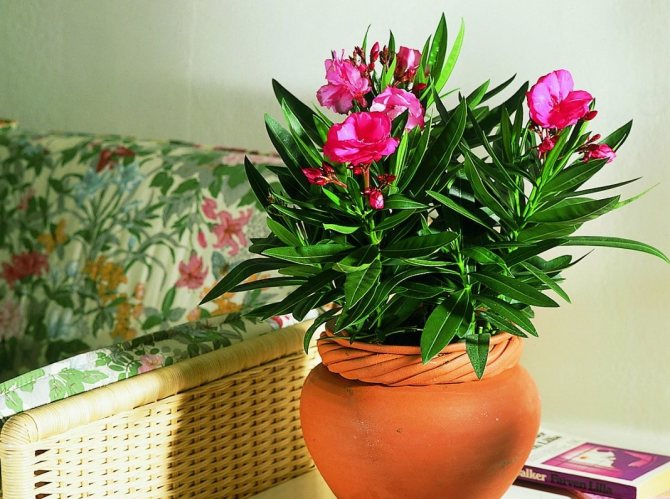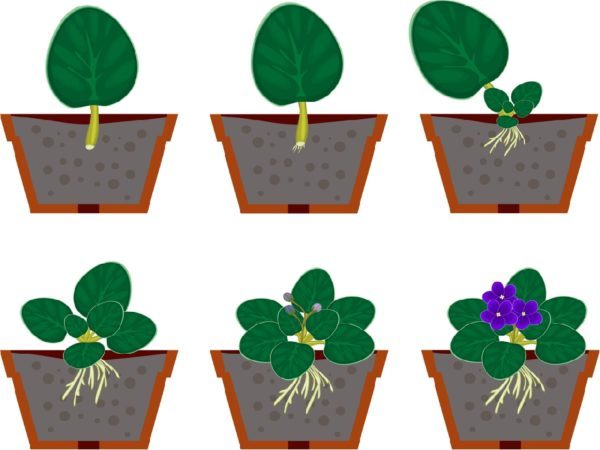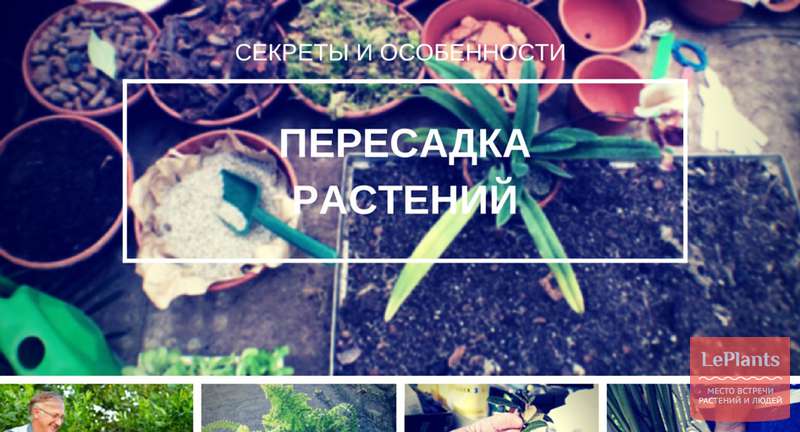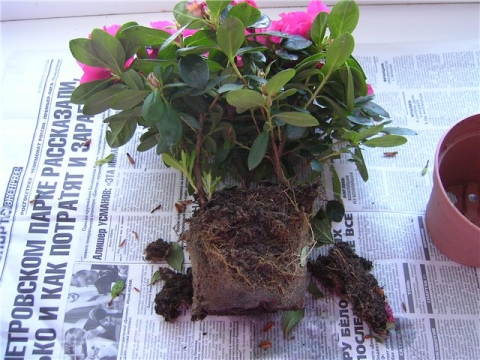Features of autumn transplantation of indoor plants
Only when the volume of the pot is outgrowing and when plants are purchased in inert soil in autumn, transshipment is permissible, but even then not quite classical: the roots that have formed dense rings at the bottom of the container, like a too compacted waterproof lump, will at least have to be stirred up.
When the soil is depleted, it makes no sense to leave the spoiled substrate, and when salting, acidifying, contaminating, the complete release of the roots from the old soil with inspection, pruning and processing of the roots is a mandatory measure.
Before starting a transplant, you should make sure that you are well prepared for this procedure:
- prepare containers in which plants are transplanted in the fall: they should ideally fit them in volume. Even with a very noticeable outgrowth of the old pot, it is impossible to increase its volume strongly, adhering to the standard recommendations for the ratio of height and width;
- make sure there are high-quality drainage holes and disinfect the drainage materials at the bottom;
- check the requirements of a specific plant species;
- select the substrate and its composition individually, carry out processing (any soil in the fall, especially if an infected plant is transplanted into it, it is better to disinfect);
- prepare tools, containers and all preparations that will be needed for processing plants;
- prepare two workplaces - one for removing old soil, the other for planting in a clean substrate.
 If an autumn transplant is carried out due to soil contamination, it is carefully removed or washed off in warm clean water.
If an autumn transplant is carried out due to soil contamination, it is carefully removed or washed off in warm clean water.
The basic rules for the autumn transplant procedure are very simple:
- In all cases, except for soil acidification, the plant is well watered several hours or a day before transplanting.
- The plant is carefully removed by turning or tilting the container and holding the above-ground parts as carefully as possible.
- The soil is carefully removed or washed off in warm clean water, trying to minimize contact with the roots. If the root ball is very tight, the roots must be untangled. Solid masses filled with small roots, from which it is impossible to remove the substrate, are cut in several places.
- After release, the roots are carefully examined. All places of damage, "doubtful" areas, dry, damaged roots are cut off.
- The cuts on the roots are immediately treated with charcoal. When it comes to plant infection, the cleaned rhizome is soaked first in clean water to remove small soil particles, and then in a fungicide solution, selected according to the disease or pest.
- Drainage is poured into a new container, the height of which must correspond to the requirements of a particular type of plant and on top - a thin layer of soil.
- The plant is placed in the center, the roots are gently straightened, the soil is poured evenly and slowly, filling the voids and trying not to bend the roots.
- The substrate is carefully compacted by squeezing the plant, but avoiding strong compaction. For species with fragile roots, you can simply top up the substrate later as it shrinks after watering. The level of deepening is checked, leaving the same and in no case deepening the plant deeper.
After the autumn transplant, the plant needs an adaptation period. It is exposed in mild conditions, protecting it from any temperature extremes, heat, cold, drafts, direct sun. Watering is carried out very carefully for another 2 to 3 weeks, focusing on the condition and minimum plant preferences for soil moisture.
If the plant suffered from soil dampness and for all succulents after transplanting, watering is not carried out, postponing for 2-3 days.
How to use it correctly?
The first column contains information about the day of the month and day of the week. The second is about the phase of the moon and the lunar day. As for the third, it indicates the sign of the zodiac in which the moon will be located. The fourth column tells about the rising and setting of the moon. The last column contains information about the favorable period.
In more detail, you need to dwell on 4 characters from the last column. They represent the following periods of the moon:
- favorable period of the moon;
- not favorable;
- neutral.
Important to remember! Any lunar calendar is not a panacea! It is only advisory in nature. When making important life decisions, rely first of all on yourself, then on your relatives, friends and specialists, only then choose the right day with us!
Terms of transplanting indoor flowers
Correctly performed transplantation of ornamental crops allows you to give an impulse to activate growth processes and ensure long flowering in the new season.
Lunar calendar
For the lover of plant growing, the calendar of the lunar phases is an excellent assistant. Focusing on it, you can very competently organize the entire scope of work related to the cultivation of indoor plantings:
You can start manipulating domestic plants already starting in January, and in February planting bulbs and seeds of those crops that have a long growing season
Since it is still cold in the middle zone in March, it is more advisable to pay attention to the flowers growing at home, or to start seedlings of garden plantings. In the summer, when there are enough sunny days, gardeners spend most of their time on the site where they loosen the soil and remove weeds
With the arrival of hot weather, it is better not to touch street crops, but to redirect the vector of attention to indoor plants.
September is a good time for gardening, and October is for transferring pets from pot to pot.
In November - December, it is best to transplant indoor flowers; these are the most suitable days for this procedure. In addition, this is an excellent time for introducing nutrient mixtures and loosening the soil substrate in flowerpots and pots.
During the Full Moon and New Moon periods, indoor crops become more sensitive and painfully tolerate any changes. These days it is undesirable to touch them completely, even to transfer them to another place. And also sow seeds, cut, transplant and transfer. This vulnerability of green pets is due to the movement of life juices. At this time, domestic crops need additional protection and feeding. A favorable time for carrying out various manipulations with colors is the waxing moon phase.
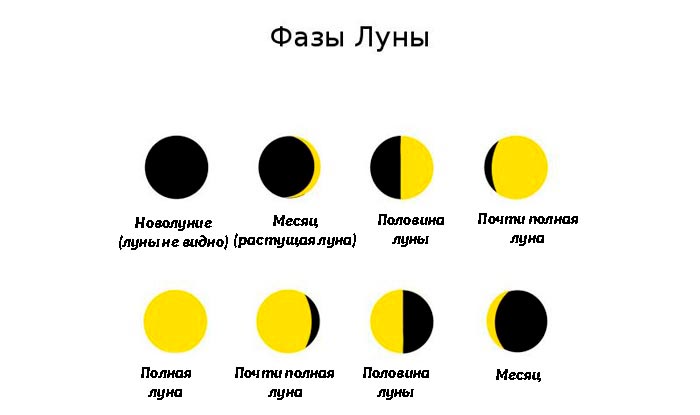
The best time for the procedure
The recommended timing for replanting most indoor plants is from February 15 to April, before their active growing season begins, or July-August, when it ends. It is possible to replace the pot and soil for indoor flowers in the fall - this is at the beginning of September. The rest of the time, it is allowed to engage in these manipulations, but only in case of extreme need: acidification of the soil or growth of the root system.
In flowers, when they are in a state of hibernation, roots do not develop, growth is suspended, evaporation is minimized. It is better to transplant indoor plants, taking into account the recommendations of the lunar calendar, so as not to expose them to stress.
When not to transplant
Do not move home flowers to another pot if there are signs of disease, otherwise weakened plantings will not be able to quickly recover. If harmful insects are found in the soil, it is necessary to process the soil and green mass with a solution of a special preparation. If you ignore this moment, then when transshipment to a different container, the larvae and adult parasites will enter it and will progress further.Such a method of controlling pests and diseases, such as washing the roots, gives a weak result.
Also, it is impossible to transplant home crops at the flowering stage, since there is a high probability of falling off not only of the formed buds, but also of the flowers themselves. Replacing a flower pot in a dormant state threatens rotting of its root system.

Gloxinia transplant after hibernation: when and how to do it
Hello dear readers! Surely you have plants at home that completely wither in the fall, but after a while they wake up and bloom with renewed vigor. One of them is gloxinia, or synningia.
A characteristic feature of gloxinia is that this flower dies regularly with the end of summer. The rest period can last from three to four months. As soon as the plant "wakes up", it must be transplanted into new soil. Gloxinia transplant after hibernation is done so that the flower receives all the necessary nutrients.
If this is done with a delay, then the synningia will quickly fade and die. Timely transplantation into new soil contributes to lush growth and abundant flowering. The first signs of awakening will appear in February.
But if spring has come, and gloxinia does not show signs of life, then this is the time when it can already be pulled out of hibernation. Water the plant lightly and cover with a plastic bag. By the way, the flower must be watered during hibernation - but very, very sparingly and infrequently.
March is the time when you can already wake up the plant.
We transplant a flower
How to transplant gloxinia after hibernation so as not to damage it, so that after transplantation it does not have to get used to new conditions for a long time? It is best to buy ready-made soil.
This flower loves light, loose soil, which contains peat, sand and leafy soil. However, gardeners can easily prepare such a mixture themselves.
The amount of soil and fertilizer depends on the size of the plant, the larger they are, the more spacious the pot of soil should be.
When to plant synningia?
If you add a little humus to the pot, then too loose soil will become thicker. In addition, the awakened plant will receive additional nutrients. In this case, the oversaturation of the soil with fertilizers can lead to death.
In stores, ready-made soil is always sold, designed for specific types of plants. Find one for synningia too. But concentrated fertilizers can be added to the soil no earlier than a week after transplanting.
Growth conditions
Gloxinia loves comfortable conditions. This also applies to the size of the pot. It should be wide enough, but not high. In general, the flower grows slowly, so it will look ridiculous in a tall pot.
Be sure to place drainage on the bottom of the pot before transplanting. To do this, if you do not have a bag of expanded clay, use small pebbles, foam crumbs, broken red brick and even coarse sand.
Before transplanting, when you take out the tuber, carefully examine the root system. Often during hibernation, it is infected with parasites. Unfortunately, these organisms are very unpretentious.
Most often, pests settle on a growing flower under its leaves, but often they also live on tubers.
You also need to keep in mind that not all tubers wake up at the same time. In some specimens, the dormant period lasts five or more months.
This is a case when it is impossible to take "potatoes" out of hibernation, as they will simply die. After transplanting into a new pot, the plant seems to freeze. At this time, it almost does not consume moisture from the soil.
Do not water the flower until the top layer of soil is dry.
Things to Consider
To preserve the life of last year's tubers, it is most reliable to wait for the natural awakening of the plant. This usually occurs in early spring. At the same time, there is a method of forced awakening.
How to wake up a plant:
- Place the well-washed and dried mini-tubers in tight bags with a small amount of wet peat.
- Close the bags tightly and do not ventilate until you reach the tubers.
- Place all packages in a place open to sunlight or under the rays of a phyto-lamp. Packages should be exposed to light for 12-14 hours.
- The best temperature for a quick awakening is 24 ° –26 ° Celsius.
Observe: when perspiration appears on the film, you need to get the tubers out of the bag. Moisture condensation means that the tubers have begun their vital activity. It is at this time that young buds appear on them, which means that the tubers can be planted in the ground.
Spring mood and a riot of colors on the windowsill!
Types of jobs
For the normal development of indoor plants, you need to consider:
- temperature regime. Depending on the type of vegetation, a certain room temperature is maintained. In the summer, 23 degrees is a suitable setting for most species. In winter, you should provide the environment necessary for growth, because at low temperatures the leaves darken, curl up, and fall off. At high - the lower leaves wither, fall off;
- illumination. Lack of daylight or sunlight can lead to the death of flowers;
- appropriate watering. In winter, water should be moderately watered for almost all plant species, except for cacti and succulents. From spring to autumn - abundant watering, but avoid waterlogging;
- air humidity. Most of the plants are afraid of the dry atmosphere, therefore, during the operation of the heating system from autumn to spring, and during hot summer, it is better to spray the surface of the leaves with water;
- nutrition of roots and stems. Any plant needs nitrogen, roots - phosphate, flowers - potassium. The most effective feeding method is a liquid substance that nourishes the roots evenly and quickly. From spring to autumn, flowers should be fed regularly; in winter, feeding is significantly reduced or stopped;
- fresh air access. Although indoor vegetation produces oxygen, it needs fresh air. This reduces the temperature in summer, when flowers accumulate, it reduces humidity, strengthens the stems. It is recommended to take plants outside during warm periods from spring to autumn;
- appearance care. The home bush must be cleaned of dust, pinched, tied up, trimmed, old leaves removed. This should be done all year round.

The lunar calendar is scheduled for all months of the year. But there are a number of rules that are best followed when growing home flowers:
- Transplanting in winter and autumn is undesirable.
- During the flowering period, the plant cannot be transplanted, despite the favorable days.
- Flowering varieties are transplanted after flowering.
- Yellowed foliage indicates the need to change the soil layer.
- Young specimens can be replanted once a year.
- Solid plants growing in tubs, flowerpots are transplanted every 5 years.
Useful articles from the heading "Calendars, Floral":
Useful articles for the gardener:
- Lunar sowing calendar for 2021: gardener, gardener, sowing table
- When to dig out hazel grouses after flowering and how to store them correctly
- Autumn work in the garden and garden: what needs to be done
- When to sow pepper for seedlings in 2020: sowing dates
- Gooseberry jam with orange: the best recipes
- When to harvest walnuts: timing, storage
- Mushroom picker calendar 2020: when to collect, auspicious days
- Autumn work in the garden and garden: what needs to be done
- Do I need to dig a garden before winter: timing, what fertilizers to apply
- Apricot compote for the winter: delicious and simple recipes
Land and substrates
When replanting, replace as much soil as possible, but so as not to damage the roots. It is best to buy a versatile substrate that is ideal for most plants. Of course, some of them require a special composition.Cacti prefer soil with a lot of gravel, azaleas and orchids grow in a mixture of bark, soil, coconut fiber. Before filling the pot with earth, it is advisable to cover the lower thick layer of several centimeters with gravel or expanded clay.
In this way, we provide the best drainage, which will save the plant from excess water and the roots will not rot. The soil should be poured at a level of 1-2 cm below the edge of the pot. Expanded clay can be poured onto the surface so that lime deposits do not form there.
Most indoor flowers grow well in any soil. Some, however, require special formulations.
Which soil to choose depends on the type of plant:
- peat is loved by such green pets as anthurium, dracaena, fern;
- heavy clay is suitable for Kalanchoe, papyrus, tradescantia;
- do not tolerate the presence of calcium carbonate in the soil of gardenia and heather, they need a slightly acidic soil.
Sometimes land from the garden is used for transplanting, but there is a high risk that weeds or pests will be brought into the house with it. It is also too heavy for delicate roots. The prepared substrates are pre-disinfected and specially prepared from a mixture of various components, so that the roots can grow freely in them.
The new pot should not be too tall or too large. Do not transplant the flowers into a much larger pot; the next container should be 2-3 centimeters larger in diameter.
Choose good pots with holes. The most ordinary plastic pot with holes is better than a decorative casing without holes.
When do indoor flowers need a transplant?
The frequency of transplanting different flowers differs depending on the species and variety. A young plant, rapidly gaining green and root mass, is annually placed in a larger pot with new soil.
The growth of a flower at the age of 3-4 years is significantly reduced, which means that the frequency of its transplants also decreases. It should be borne in mind that this procedure is stressful for the plant, therefore, it should be carried out only in certain cases.
The reason for the transplant may be:
- yellowing of foliage;
- small size of new leaves;
- slowing down or stopping the growth of the ground part;
- poor flowering or lack thereof;
- roots sticking out of the drainage holes;
- the smell of swamp rot or rapid drying of the soil;
- the presence of white bloom on the upper soil layer;
- the appearance of parasites and pests in the soil.
The best time to transplant a plant
The procedure is planned and emergency. Experienced flower growers observe the following rules:
- Flowers are transplanted in the spring, when the growing season begins. At this time, the plant, having gained strength, wakes up after hibernation, its active growth begins. Such a flower tolerates stress much easier, quickly recovers and adapts to new conditions. In addition, when placed in a fresh fertilized soil mixture, it receives a large portion of energy for full growth and flowering.
- In early autumn, transshipment of the plant is allowed if its root system has grown too much over the summer. Also at this time, indoor specimens are planted in pots, which were placed in the front garden for the summer.
- In winter, the plant, weakened after flowering, goes into a sleep phase. All processes slow down in it, recovery takes place. A transplant can be detrimental to his condition, and adaptation will take too long. During this time, diseases may develop or pests may start.
- An emergency transplant is carried out only if there is an urgent need to replace the soil or if the pot has broken.
When not to conduct?
Restoring a plant after transplanting requires energy and the creation of favorable climatic conditions. You should refrain from the procedure in the following situations:
- the flower was just bought. They do not touch it, leave it for 15-20 days in a transport container for adaptation;
- a specimen diseased or attacked by pests.The plant requires prior treatment. Otherwise, an already weakened plant may not survive the additional load;
- during flowering. During this period, all forces are spent on the development of ovaries, flowers, seeds or fruits. A transplant can completely exhaust the pet and lead to his death;
- in the resting phase (autumn-winter). All processes slow down, which will prevent the flower from recovering after the procedure.
Better in summer?
During this period, it is better to do transshipment. Being in the peak of the growing season, the flower can prepare for flowering, which requires a lot of energy. The transfer is less painful and easier to bear.
Before the procedure, it is advisable to pay attention to the weather forecast. It's good if the next day is warm and cloudy
In the morning or evening?
It is better to transplant flowers from 16-00 to 20-00, until the sun goes down. There are several reasons for this:
- in the early morning, the plant just wakes up and is not ready for stressful situations;
- in the afternoon, at the peak of activity, unexpected stress will negatively affect further growth;
- overnight, the weakened plant will not be exposed to high daytime temperatures and will have time to adapt.
Indoor flower transplant
Any plant gradually grows, and its root system develops. Over time, it becomes the largest, absorbing all useful substances from the soil mixture. As the roots grow, they become cramped in the same container. Even if the "pets" are fed and kept in one pot for several years, their full development will stop.
You can often observe when the flower is watered frequently, and the soil in it dries out very quickly. So, it happens due to the intensive growth of the root system. Another factor is that through the drainage hole, you can see some of the roots that make their way out. If this happens, then it's time to change the cramped pot to a more spacious one.
Certain exotic plant species do not need to be replanted annually. Changing the pot negatively affects them, they experience stress. They need to be transplanted only when the root system has completely entwined the entire pot.
A transplant helps to solve various problems, since they often interfere with full-fledged development:
- not enough free space in the pot;
- if pests, diseases appear;
- lack of nutrients in the soil.
Plants should have enough time to root well before flowering, so dormancy is the best time.
When is a lunar transfer needed?
- If the roots of plants begin to beg outward, sprouting through the holes in the bottom of the pot or do not fit into the pots, then you need to take care of a new home for the plants.
- The soil in the pot is hard, powdered with a white, bad-smelling bloom - this indicates an increased acidity of PH, which inhibits plant growth.
- There is a need for the biological parameters of the growth and development of a flower to transplant it into a new soil.
- A plant purchased from a flower shop usually has an artificial substrate that must be replaced with the recommended soil for the crop.
- The flower sheds yellow foliage, grows poorly, does not bloom, looks painful.

It's important to know:
- A large pot is more likely to cause a plant to feel unwell than a small one.
- If not necessary, it is best not to replant the plants during the colder months. Spring is the best time to move your green pet to a new pot.
- Despite the heat, there is no ban on transplanting indoor plants in summer.

Is it possible in winter
Interestingly, winter transplanting will not have an undesirable effect on all plants. There are many exceptions. What indoor flowers can be safely transplanted in winter? There is no definite list. However, if you notice that your plant turns yellow or suffers from insects or fungal diseases, be sure to think about transplanting it in the winter.If we talk about when it is better to “rejuvenate” flowers in winter, this is, of course, the end of the season, the pre-spring period.
Flowers gradually come to their senses after a long phase of absolute calm, and at this time you can safely transplant them and at the same time nourish them with useful substances. In addition, young roots grow intensively, so when transplanting, the root system will be able to fill a new container faster, and, thus, the plant will recover faster and continue to grow. In general, a transplant at the end of winter will not harm home flowers in any way, but there is no need to rush. Such an event requires responsible preparation.
Let's turn to the lunar calendar
It has been proven that the location of the moon affects the rate of flow of fluids in living organisms. Flowers are no exception. Depending on the lunar phase, it is possible to complicate or facilitate the recovery of the transplanted plant.
What impact does it have?
Depending on the lunar phase, the sap flow of all plants changes. To carry out any manipulations with flowers, gardeners are guided by the following rules of the four phases of the moon:
- The waxing moon is the period between the new moon and the full moon, causing an ascending sap flow. At this time, the liquid moves from the roots to the ground part. The stem, leaves, buds and flowers are energized and grown.
- Full moon - the period consisting of the full moon itself plus one day before and after it. The terrestrial part is the richest in the energy accumulated during the growing moon. Damage to the roots will practically not affect the condition of the flower, since all the juices are in its upper part.
- The waning moon is the time from full moon to new moon. Juices rapidly move down to the roots, gradually weakening its ground part. During this period, it is undesirable to damage the root system.
New Moon - the period when all the energy of the plant has accumulated in the roots. The ground part is weakened. Damage to the root system can seriously damage the entire flower. The period consists of the new moon itself plus one day before and after it.
Can you transplant when the moon is waning?
During this period, the bulk of the juices and energy accumulates in the roots. Transplanting a flower without damaging the roots is unlikely to work. This negatively affects the health and recovery of the plant after suffering stress. If possible, postpone the procedure until the end of the new moon.
Which days of the week or day to prefer?
Florists who orient on the phases of the moon use the lunar calendar compiled annually. In 2019, favorable days for transplanting are:
- in August - 3-8, 10-12, 16, 18, 21, 22, 27, 31;
- in September - 1-6, 8, 9, 13, 14, 18, 19, 22-24, 29, 30;
- in October - 1-5, 10, 11, 15-17, 21, 29-31;
- in November - 1-3, 6-8, 11-13, 17, 20, 27-30;
- in December - 3-5, 8-13, 17, 19, 23, 27, 31.











